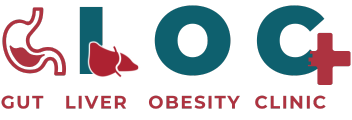Procedures


Manometry
Manometry is a diagnostic procedure used to measure the pressure and function of the muscles in the gastrointestinal tract, particularly the esophagus and the anal sphincter. This test helps diagnose conditions like achalasia, gastroesophageal reflux disease (GERD), and swallowing disorders. By measuring muscle contractions and pressures, Dr. Maneesh Paliwal can accurately assess the functioning of the GI tract and provide personalized treatment plans. Manometry is a key tool in understanding digestive motility disorders, allowing for better-targeted treatments and improved outcomes.
Who Benefits from Manometry?
- Difficulty swallowing (dysphagia)
- Chest pain related to esophageal disorders
- Chronic heartburn or GERD
- Achalasia (esophageal motility disorder)
- Esophageal spasm
- Failure to respond to GERD medications
- Evaluation of anorectal disorders (e.g., constipation, incontinence)
How It Works
- A small, flexible tube with pressure sensors is inserted into the esophagus or rectum
- Measures pressure and muscle contractions in real time
- Records how well muscles are contracting and relaxing
- Used to evaluate the function of the lower esophageal sphincter (LES) and other GI muscles
- Non-invasive, typically performed with local anesthesia or sedation for comfort
- Helps in the diagnosis of motility disorders and guides treatment
Advantages of Manometry
- Provides detailed measurements of GI tract function
- Non-invasive and generally well-tolerated
- Helps diagnose complex motility disorders
- Accurate, real-time data for precise diagnosis
- Minimal discomfort and recovery time
- Guides treatment decisions, including medications or surgery
- Effective in understanding both esophageal and anorectal conditions
Why Choose Dr. Maneesh Paliwal, Gastroenterologist?
- Specialized in motility disorders of the gastrointestinal tract
- Utilizes advanced manometry technology for precise diagnosis
- Personalized approach to treatment based on test results
- Extensive experience with swallowing and anorectal disorders
- Non-invasive, patient-friendly procedures
- Focused on delivering the best care with minimal discomfort
